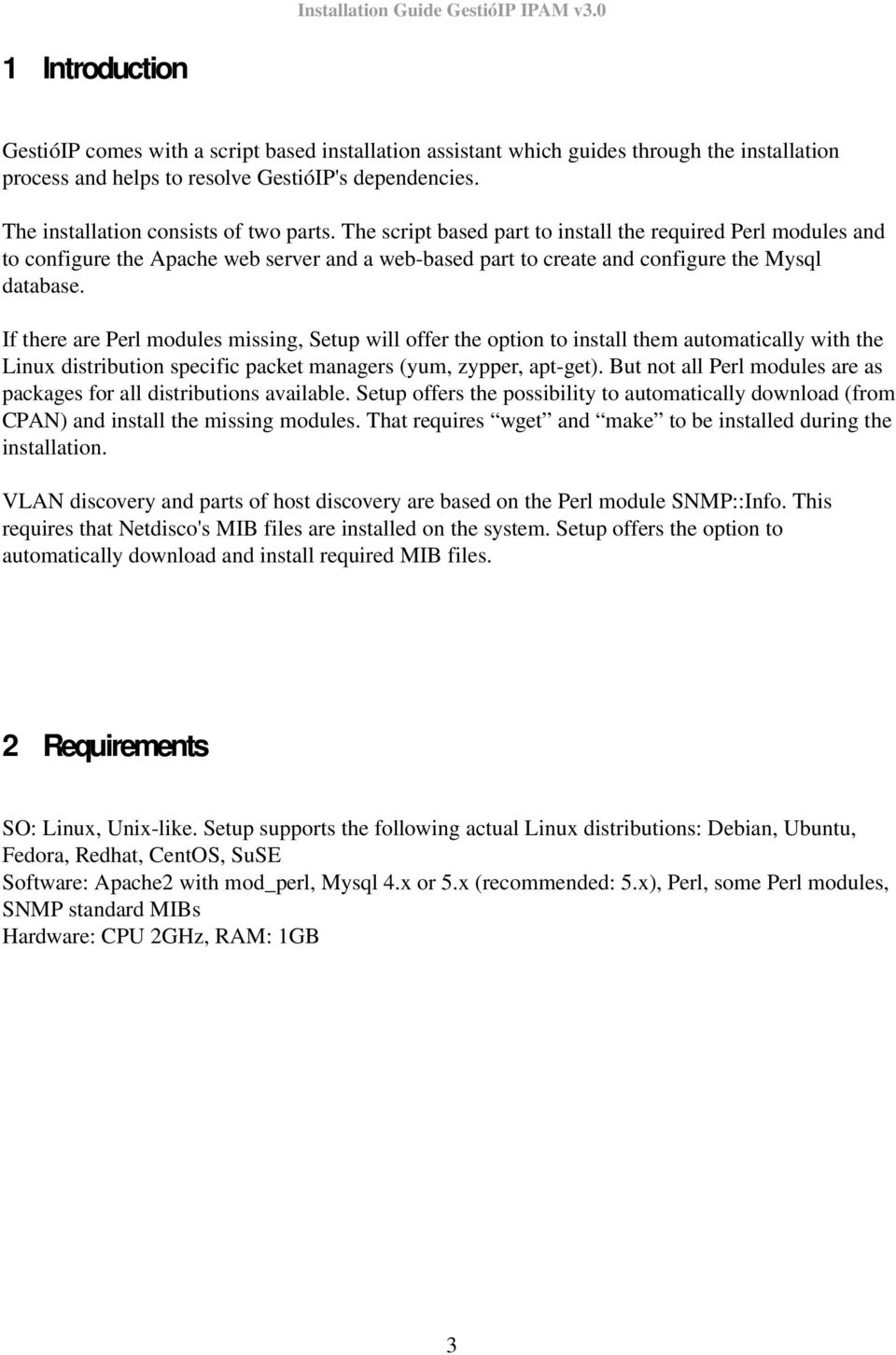For a number of Linux distributions, you can install MySQL using the MySQL Yum repository instead of the platform's native software repository. See Section 2.5.1, “Installing MySQL on Linux Using the MySQL Yum Repository” for details. CPAN installation. Installation of DBD::mysql can be incredibly easy: cpan install DBD::mysql. If you are using the CPAN module for the first time, just answer the questions by accepting the defaults which are fine in most cases. If you are using an older version of Perl, you might instead need a. Perl -MCPAN -e shell install DBD::mysql.
- Debian Perl Dbd Mysql Install Linux Ubuntu
- Debian Install Mysql Client
- Debian Perl Dbd Mysql Install Linux Command
- Debian Perl Dbd Mysql Install Linux Mint
Content |
|
Tested with MySQL on |
| Debian (Etch, Lenny, Squeeze) |
| Fedora (14) |
| Ubuntu (Hardy, Intrepid, Jaunty, Karmic, Lucid, Maverick, Natty, Trusty) |
Objective
To establish a connection to a MySQL (or MariaDB) database using the Perl DBI module
Background
The DBI module is an abstraction mechanism by which a Perl script can interact with a database with minimal regard for which DBMS (in this case MySQL) is being used to host the database.
In order to use a particular database it is first necessary to connect to it. This gives you a connection handle which is needed when calling other DBI functions.
Scenario
Suppose that there is a database called finance hosted using MySQL on a machine called db.example.com. It accepts remote TCP connections on the usual port number (3306). Valid credentials are the username ‘user’ and the password ‘xyzzy’.
Prerequisites
These instructions assume that you have:
Debian Perl Dbd Mysql Install Linux Ubuntu
- a working installation of MySQL (or MariaDB), and
- a working installation of Perl.
For this particular scenario, MySQL must be configured to accept remote TCP connections to the database and username stated above. (The usual default is to allow connections from the local machine only.)

Method
The DBI module itself does not have the ability to communicate with any specific DBMS: for that it is necessary to install the appropriate back-end module, which in the case of MySQL is DBD::mysql.
On Debian-based systems (including Ubuntu) the package that provides this module is libdbd-mysql-perl:
and on Redhat-based systems it is perl-DBD-mysql:
In both of these cases, installing the back-end DBD package should automatically install the front-end DBI package as a dependency. Within Perl the dependency relationship is reversed: it is the DBI module that must be loaded explicitly, it then loads any required DBD modules as and when they are needed:
Debian Install Mysql Client
The connection to the database is opened using the function connect. It returns a connection handle, which is needed when making subsequent calls to the DBI module:
The first argument to connect is a string which specifies the required ‘data source’. For MySQL or MariaDB it should begin with the prefix dbi:mysql:. Following this prefix is a list of settings separated by semicolons. The example above has two of these:
database, the name of the database. According to the documentation it should always be specified.host, the name of the database server. This is required when connecting to a remote server. When it is omitted, or is the empty string, or is the string ‘localhost’, a local connection is made using a UNIX-domain socket. To make a local connection using TCP it is necessary to specify the loopback address numerically (127.0.0.1).
The second and third arguments are the username and password. If the username is undefined then it defaults to the owner of the current process (on POSIX-like platforms). The password should be left undefined if no password is required.
Debian Perl Dbd Mysql Install Linux Command
The fourth argument is a hash ref containing a set of options. The documentation recommends that AutoCommit should always be specified explicitly. For most purposes it should be enabled in the first instance: if particular transactions require it to be disabled then this can be done later.
By default the option RaiseError is false and PrintError is true, meaning that errors are printed as warnings but do not raise exceptions. It is safer to reverse these defaults (as was done above), because then it is not necessary to explicitly check for errors after every DBI function call.
Testing

The script below opens a connection then tests it using a statement that does not depend on the content of the database:
It should produce the output:
(Note that a SELECT statement without a FROM clause is not standard SQL, so cannot necessarily be used for testing other types of database.)
Troubleshooting
Debian Perl Dbd Mysql Install Linux Mint
Provided that you have enabled the RaiseError option (as recommended above), any serious problems should result in either a compilation error or an exception. By default these will be reported to stderr. Some of the more common errors are addressed in detail below.
If you are writing a CGI script then you should look in the web server error log. Alternatively, it may be feasible to execute the CGI script from the command line for testing purposes.

Errors
Can't locate DBI.pm
An error similar to:
could indicate that:
- the DBI module (and therefore probably the DBD module) has not been installed, or
- the module is not on the include path (
@INC).
On Debian-based systems the DBI module is provided by the libdbi-perl package, and on Redhat by perl-DBI. In both of these cases it should be installed automatically as a dependency of the DBD package, so if this has not happened then it is quite likely that the DBD module has not been installed either. You can obtain a list of the installed DBI and DBD modules with the command:
on Debian and
on RedHat.
An issue with the include path would be unusual if you are using pre-packaged modules and have not overridden the default. You can check by inspecting the content of @INC:
Bear in mind that the path seen by (for example) a CGI script will not necessarily be the same as for a script executed from the shell. For this reason, you should try to ensure that any script used for testing is invoked in exactly the same manner as the script being investigated.
Can't locate DBD/mysql.pm
An error similar to:
indicates that the DBI module has been successfully loaded, and that some DBD modules are available (listed on the penultimate line), but that the specific DBD module needed to access MySQL cannot be found. Possible explanations are that:
- the required DBD module has not been installed (see above),
- the module is not on the include path (see above, but unlikely if the DBI module was loaded), or
- the name of the data source passed to DBI::connect was incorrect.
You can check the last point by inspecting the first line of the error message, where it gives the path to the module that could not be loaded. For connecting to MySQL it should be DBD/mysql.pm (all lower case for ‘mysql’).
Missing dbi:driver: prefix
An error similar to:
probably indicates an error in the data source passed to DBI::connect. In this case it is a typo: the prefix dbi has been erroneously replaced with bdi.
Access denied for user
An error similar to:
indicates that the DBD module could not authenticate to the database server. There are several possible reasons why this could happen:
- the hostname is incorrect (but is running an instance of MySQL);
- the username is incorrect;
- the password is incorrect; or
- all of the above are correct but the database server has not been configured to accept them.
Check that you can connect to the database using the mysql command with the same set of credentials:
If this fails then the problem relates to MySQL (not to the DBI module) and will need to be fixed before you can proceed further. Otherwise, the most likely explanation is some difference between the credentials passed to connect and the credentials passed to psql.
Access denied for user to database
An error similar to:
indicates that the DBD module was able to authenticate to the database server, but that the specified user does not have permission to access the specified database. This does not necessarily imply that the specified database exists. Possible root causes are that:
- the wrong database name was specified, or
- permission to access the database has not been granted to the specified user.

You can rectify the second of these possibilities by issuing a SQL GRANT statement:
(This would give that user unfettered access to the finance database. You can restrict access to particular tables and/or particular actions if this is more appropriate.)
Unknown database
An error similar to:
indicates that the DBD module was able to authenticate to the database server, and that the specified user has permission to access the specified database, but that the specified database does not exist. Possible root causes are that:
- the wrong database name was specified, or
- the database has not been created, or
- the database has been dropped.